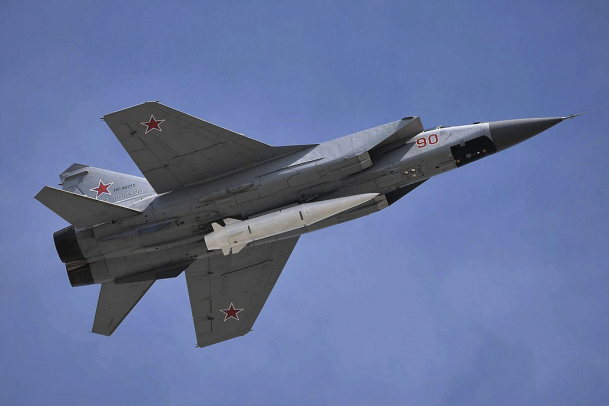Russian President Vladimir Putin has authorised the serial production of the country’s advanced Oreshnik hypersonic missile, citing deteriorating global security and escalating Middle East tensions as justification. He announced the move during a speech to graduates of military academies at the Kremlin, confirming that the Oreshnik, capable of reaching speeds above Mach 10 and carrying conventional or nuclear warheads, will be manufactured under the State Armament Programme 2027–2036.
The Oreshnik, first revealed in late 2024 and deployed in limited numbers in Ukraine, is a road-mobile intermediate‑range ballistic missile estimated to reach 5,500 km. Analysts note its precision guidance system, with reported circular error probable of only 10–20 m, and a payload capacity nearing 1 000 kg. The missile complements the Russian military’s Zircon cruise missile arsenal, which entered service in 2023 and achieves Mach 9 speeds over 1 000 km range.
Putin framed the mass-production move as necessary amid what he described as a “rapidly worsening” global security environment, pointing to Western military actions in the Middle East, including U.S. “bunker‑busting” strikes on Iranian nuclear sites, and Iran’s subsequent missile attacks on U.S. bases in Qatar. He accused Western powers of dragging non‑regional actors into new crises, warning such dynamics could spark “strategic miscalculation”.
Russia’s decision comes amid widespread concern among analysts that the conflagration in the Middle East could spiral. Iran has claimed to field its own hypersonic Fattah‑1 missile against Israel, though military experts question its actual manoeuvrability and hypersonic performance. Israel has reportedly intercepted more than 95 % of such launch attempts.
While the U.S. and China are acknowledged as pioneering true manoeuvrable hypersonic systems, Russia remains among the few countries that have operational equivalents—most notably the Kinzhal and Avangard glide vehicle, both in serial production since 2018. Despite Russia’s claims, Ukraine has intercepted several hypersonic missiles, including Kinzhal, using U.S.-made Patriot systems.
The Oreshnik fills a strategic role similar to its peers: high-speed, low-altitude flight complicating detection and interception, extending Russia’s reach beyond European theatres. Analysts note its deployment follows Russia’s 2019 exit from the INF Treaty and aligns with its goal of maintaining strategic parity amid Western deployments of long-range precision weapon systems.
Putin’s speech, delivered alongside Iran’s foreign minister, condemned U.S. strikes on Iranian nuclear facilities as “unprovoked aggression” and pledged support for the Iranian people. Russia’s military-technical cooperation with Iran remains intentionally vague, with top officials avoiding explicit commitments while emphasising deepening bilateral ties.
Domestically, the arms build-up unfolds under Putin’s 2027–2036 modernisation agenda, which encompasses upgrades across the nuclear triad, including Yars ICBMs, Tu‑160M strategic bombers, and naval vessels equipped with long-range strike weapons, alongside the establishment of a dedicated drone operations division.
The U.S. response to Russia’s announcement has been measured, amid Washington’s increased military posture in the Gulf. Pentagon officials have positioned aircraft carrier strike groups in the region, reinforcing its presence as diplomatic engines—including European-led talks—continue to seek de-escalation.
In NATO capitals, Russia’s hypersonic expansion, paired with heightened conflict in the Middle East, is seen as amplifying global risk. The alliance has reaffirmed that an uncontrolled spread of new high-speed weapons could destabilise deterrence frameworks and regional balances. Analysts warn that further hypersonic proliferation may spur an arms race, as nations strain to either field advanced systems or develop countermeasures.
As production ramps up, attention turns to how Oreshnik will be integrated operationally, its numbers, deployment patterns, and whether its serial outputs will shift strategic calculations toward Russia, both in existing theatres and emerging global hotspots.




 BJP accuses Tejashwi of ‘namazwaad’ plot
BJP accuses Tejashwi of ‘namazwaad’ plot 